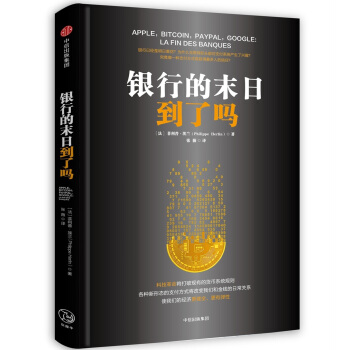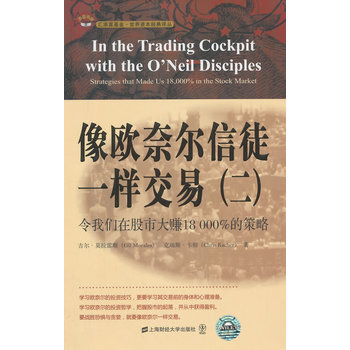![利率模型理論和實踐(第2版) [Interest Rate Models - Theory and Practice:With Smile, Inflation and Credit]](https://pic.tinynews.org/10256966/a2f6518a-d356-46e0-bc49-1df1732a0cb2.jpg)

具體描述
內容簡介
《利率模型理論和實踐(第2版)》是一部詳細講述利率模型的書,旨在將該領域的理論和實踐聯係起來,在第一版的基礎上增加瞭許多新特徵。有關LIBOR市場模型中的“Smile”部分得到瞭極大的豐富,已有內容擴充為幾個新的章節。書中增加瞭瞬時相關矩陣的曆史估計,局部波動動力學和隨機波動模型,全麵講述瞭新發展較快的不確定波動率方法。跟膨脹有關的衍生品定價講述的較為詳細。讀者對象:數學專業研究生、老師和經濟、金融的相關人員。
內頁插圖
目錄
PrefaceMotivation
Aims, Readership and Book Structure
Final Word and Acknowledgments
Description of Contents by Chapter
Abbreviations and Notation
Part I. BASIC DEFINITIONS AND NO ARBITRAGE
1. Definitions and Notation
1.1 The Bank Account and the Short Rate
1.2 Zero-Coupon Bonds and Spot Interest Rates
1.3 Fundamental Interest-Rate Curves
1.4 Forward Rates
1.5 Interest-Rate Swaps and Forward Swap Rates
1.6 Interest-Rate Caps/Floors and Swaptions
2. No-Arbitrage Pricing and Numeraire Change
2.1 No-Arbitrage in Continuous Time
2.2 The Change-of-Numeraire Technique
2.3 A Change of Numeraire Toolkit(Brigo & Mercurio 2001c)
2.3.1 A helpful notation: "DC"
2.4 The Choice of a Convenient Numeraire
2.5 The Forward Measure
2.6 The Fundamental Pricing Formulas
2.6.1 The Pricing of Caps and Floors
2.7 Pricing Claims with Deferred Payoffs
2.8 Pricing Claims with Multiple Payoffs
2.9 Foreign Markets and Numeraire Change
Part II. FROM SHORT RATE MODELS TO HJM
3. One-factor short-rate models
3.1 Introduction and Guided Tour
3.2 Classical Time-Homogeneous Short-Rate Models
3.2.1 The Vasicek Model
3.2.2 The Dothan Model
3.2.3 The Cox, Ingersoll and Ross (CIR) Model
3.2.4 Affine Term-Structure Models
3.2.5 The Exponential-Vasicek (EV) Model
3.3 The Hull-White Extended Vasicek Model
3.3.1 The Short-Rate Dynamics
3.3.2 Bond and Option Pricing
3.3.3 The Construction of a Trinomial Tree
3.4 Possible Extensions of the CIR Model
3.5 The Black-Karasinski Model
3.5.1 The Short-Rate Dynamics
3.5.2 The Construction of a Trinomial Tree
3.6 Volatility Structures in One-Factor Short-Rate Models
3.7 Humped-Volatility Short-Rate Models
3.8 A General Deterministic-Shift Extension
3.8.1 The Basic Assumptions
3.8.2 Fitting the Initial Term Structure of Interest Rates
3.8.3 Explicit Formulas for European Options
3.8.4 The Vasicek Case
3.9 The CIR++ Model
3.9.1 The Construction of a Trinomial Tree
3.9.2 Early Exercise Pricing via Dynamic Programming
3.9.3 The Positivity of Rates and Fitting Quality
3.9.4 Monte Carlo Simulation
3.9.5 Jump Diffusion CIR and CIR++ models (JCIR, JCIR++)
3.10 Deterministic-Shift Extension of Lognormal Models
3.11 Some Further Remarks on Derivatives Pricing
3.11.1 Pricing European Options on a Coupon-Bearing Bond
3.11.2 The Monte Carlo Simulation
3.11.3 Pricing Early-Exercise Derivatives with a Tree
3.11.4 A Fundamental Case of Early Exercise: BermudanStyle Swaptions.
3.12 Implied Cap Volatility Curves
3.12.1 The Black and Karasinski Model
3.12.2 The CIR++ Model
3.12.3 The Extended Exponential-Vasicek Model
3.13 Implied Swaption Volatility Surfaces
3.13.1 The Black and Karasinski Model
3.13.2 The Extended Exponential-Vasicek Model
3.14 An Example of Calibration to Real-Market Data Two-Factor Short-Rate Models
4.1 Introduction and Motivation
4.2 The Two-Additive-Factor Gaussian Model G2++
4.2.1 The Short-Rate Dynamics
4.2.2 The Pricing of a Zero-Coupon Bond
4.2.3 Volatility and Correlation Structures in Two-Factor Models
4.2.4 The Pricing of a European Option on a Zero-Coupon Bond
4.2.5 The Analogy with the Hull-White Two-Factor Model
4.2.6 The Construction of an Approximating Binomial Tree
4.2.7 Examples of Calibration to Real-Market Data
4.3 The Two-Additive-Factor Extended CIR/LS Model CIR2++
4.3.1 The Basic Two-Factor CIR2 Model
4 3 2 Relationship with the Longstaff and Schwartz Model (LS)
4.3.3 Forward-Measure Dynamics and Option Pricing for CIR2
4.3.4 The CIR2++ Model and Option Pricing
5. The Heath-Jarrow-Morton (HJM) Framework
5.1 The HJM Forward-Rate Dynamics
5.2 Markovianity of the Short-Rate Process
5.3 The Ritchken and Sankarasubramanian Framework
5.4 The Mercurio and Moraleda Model
Part III. MARKET MODELS
6. The LIBOR and Swap Market Models (LFM and LSM)
6.1 Introduction
6.2 Market Models: a Guided Tour.
6.3 The Lognormal Forward-LIBOR Model (LFM)
6.3.1 Some Specifications of the Instantaneous Volatility of Forward Rates
6.3.2 Forward-Rate Dynamics under Different Numeraires
6.4 Calibration of the LFM to Caps and Floors Prices
6.4.1 Piecewise-Constant Instantaneous-Volatility Structures
6.4.2 Parametric Volatility Structures
6.4.3 Cap Quotes in the Market
6.5 The Term Structure of Volatility
6.5.1 Piecewise-Constant Instantaneous Volatility Structures
6.5.2 Parametric Volatility Structures
6.6 Instantaneous Correlation and Terminal Correlation
6.7 Swaptious and the Lognormal Forward-Swap Model (LSM)
6.7.1 Swaptions Hedging
6.7.2 Cash-Settled Swaptions
6.8 Incompatibility between the LFM and the LSM
6.9 The Structure of Instantaneous Correlations
6.9.1 Some convenient full rank parameterizations
6.9.2 Reduced-rank formulations: Rebonato's angles and eigen- values zeroing
6.9.3 Reducing the angles
6.10 Monte Carlo Pricing of Swaptions with the LFM
6.11 Monte Carlo Standard Error
6.12 Monte Carlo Variance Reduction: Control Variate Estimator
6.13 Rank-One Analytical Swaption Prices
6.14 Rank-r Analytical Swaption Prices
6.15 A Simpler LFM Formula for Swaptions Volatilities
6.16 A Formula for Terminal Correlations of Forward Rates
6.17 Calibration to Swaptions Prices
6.18 Instantaneous Correlations: Inputs (Historical Estimation) or Outputs (Fitting Parameters)?
6.19 The exogenous correlation matrix
6.19.1 Historical Estimation
6.19.2 Pivot matrices
6.20 Connecting Caplet and S x 1-Swaption Volatilities
6.21 Forward and Spot Rates over Non-Standard Periods
6.21.1 Drift Interpolation
6.21.2 The Bridging Technique
7. Cases of Calibration of the LIBOR Market Model
7.1 Inputs for the First Cases
7.2 Joint Calibration with Piecewise-Constant Volatilities as in TABLE 5
7.3 Joint Calibration with Parameterized Volatilities as in Formulation 7
7.4 Exact Swaptions "Cascade" Calibration with Volatilities as in TABLE 1
7.4.1 Some Numerical Results
7.5 A Pause for Thought
7.5.1 First summary
7.5.2 An automatic fast analytical calibration of LFM to swaptions. Motivations and plan
7.6 Further Numerical Studies on the Cascade Calibration Algorithm
……
8.Monte Carlo Tests for LFM Analytical Approximations
Part Ⅳ.THE VOLATILITY SMILF
9.Including the Smile in the LFM
10.Local-Volatility Models
11.Stochasti-Volatility Models
12.Uncertain-Parameter Models
Part Ⅴ.EXAMPLES OF MARKET PAYOFFS
13.Pricing Derivatives on a Single Interest-Rate Curve
14.Pricing Derivatives on Two Interest-Rate Curves
Part Ⅵ.INFLATION
15.Pricing of Inflation-Indexed Derivatives
16.Inflation Indexed Swaps
17.Inflation-Indexed Caplets/Floorlets
18.Calibration to market data
19.Introducing Stochastic Volatility
20.Pricing Hybrids with an Inflation Component
Part Ⅶ.CREDIT
21.Introduction and Pricing under Counterparty Risk
22.Intensity Models
23.CDS Options Market Models
Part Ⅷ.APPENDICES
A.Other Interest-Rate Models
B.Pricing Equity Derivatives under Stochastic Rates
C.A Crash Intro to Stochastic Differential Equations and Poisson Processes
D.A Useful Calculation
E.A Second Useful Calculation
F.Approximating Diffusions with Trees
G.Trivia and Frequently Asked Questions
H.Talking to the Traders
References
Index
精彩書摘
In the recent years, there has been an increasing interest for hybrid structures whose payoff is based on assets belonging to different markets. Among them, derivatives with an inflation component are getting more and more popular. In this chapter, we tackle the pricing issue of a specific hybrid payoff when no smile effects are taken into account. The valuation of more general structures is to be dealt with on a case by case basis and is likely to involve numerical routines as Monte Carlo.前言/序言
Welcome onboard the second edition of this book on interest rate models, to all old and new readers. We immediately say this second edition is actually almost a new book, with four hundred fifty and more new pages on smile modeling, calibration, inflation, credit derivatives and counterparty risk.As explained in the preface of the first edition, the idea of writing this book on interest-rate modeling crossed our minds in early summer 1999. We both thought of different versions before, but it was in Banca IMI that this challenging project began materially, if not spiritually (more details are given in the trivia Appendix G). At the time we were given the task of studying
and developing financial models for the pricing and hedging of a broad range of derivatives, and we were involved in medium/long-term projects.
The first years in Banca IMI saw us writing a lot of reports and material on our activity in the bank, to the point that much of those studies ended up in the first edition of the book, printed in 2001.
In the first edition preface we described motivation, explained what kind of theory and practice we were going to address, illustrated the aim and readership of the book, together with its structure and other considerations. We do so again now, clearly updating what we wrote in 2001.
用戶評價
作為一個對金融工程領域充滿熱情的學習者,我一直在努力尋找能夠幫助我深入理解利率模型精髓的書籍。《利率模型理論和實踐(第2版)》這本書,其書名本身就吸引瞭我,"理論與實踐"的結閤預示著它將兼具深度和實用性。我尚未閱讀此書,但從零散的信息中,我能想象齣它所涵蓋的內容。我猜想,這本書會從基礎的利率理論講起,比如即期利率、遠期利率的定義和計算,以及收益率麯綫的形狀所蘊含的經濟信息。然後,它會逐步深入到經典的利率模型,例如Vasicek模型、CIR模型、Ho-Lee模型以及Hull-White模型,並詳細介紹它們的數學推導過程和經濟學含義。我特彆期待書中能夠詳細解釋這些模型是如何捕捉利率的隨機性,以及它們在債券定價和風險管理中的應用。而"With Smile, Inflation and Credit"這個副標題更是讓我倍感興奮。波動率微笑是利率衍生品定價中的一個重要現象,我希望書中能夠解釋其成因,並介紹各種能夠有效擬閤波動率微笑的模型,例如局部波動率模型和隨機波動率模型。此外,通貨膨脹和信用風險是影響利率走勢的兩個關鍵因素,我希望書中能夠深入探討如何將這兩個因素納入利率模型,例如,是否會介紹能夠同時考慮通脹和信用風險的利率模型,以及如何利用這些模型來分析利率的動態。我期待書中能夠提供豐富的案例研究,展示這些模型在實際金融市場中的應用,比如如何在交易中利用模型進行定價和對衝,或者如何在風險管理中利用模型進行風險度量。我希望這本書能夠幫助我建立起一套完整的利率建模知識體係,並為我未來的學術研究或職業發展打下堅實的基礎。
評分作為一名在投資銀行風險管理部門工作瞭幾年的人,我對金融模型的實操性有著極高的要求。我讀過不少關於利率模型的書籍,但很多都過於側重理論推導,而忽略瞭模型在實際業務中的落地。這次偶然瞭解到《利率模型理論和實踐(第2版)》這本書,從它的副標題"With Smile, Inflation and Credit"來看,它似乎正是我一直在尋找的那種能夠連接理論與實踐的橋梁。我尤其對書中處理"Smile"的部分感到好奇。我們知道,標準的布萊剋-斯科爾斯模型假設波動率是恒定的,但這顯然與現實不符,尤其是在利率期權定價中,波動率的期限結構和行權價結構(即波動率微笑)是必須考慮的因素。我期待書中能夠詳細介紹各種處理波動率微笑的方法,比如隨機波動率模型、局部波動率模型,以及它們在實際中的優劣勢。同時,"Inflation"和"Credit"的加入,也讓我看到瞭本書的野心。在當前宏觀經濟環境下,通貨膨脹對利率的影響舉足輕重,而信用風險更是貫穿於金融市場的各個角落。我希望書中能夠闡述如何將通脹預期納入利率模型,例如通過加入通脹掛鈎債券的分析,以及如何量化和管理信用風險對利率麯綫的影響,例如通過信用違約互換(CDS)的定價和風險對衝。在實踐層麵,我更希望這本書能夠提供一些具體的案例研究,展示這些模型如何在風險測量(如VaR、Expected Shortfall)、壓力測試、以及資産組閤優化等場景中得到應用。我設想書中可能會有大量的代碼片段或者僞代碼,演示如何利用Python、R等工具來實現這些模型,這對我來說將是極其寶貴的學習資源。總而言之,我期待這本書能夠提供一套完整且實用的利率建模框架,幫助我更好地理解和應對復雜的金融市場風險。
評分我是一個對金融量化領域充滿探索欲的普通讀者,我對那些能夠揭示市場背後數學邏輯的書籍總是充滿興趣。《利率模型理論和實踐(第2版)》這本書,它的名字本身就傳遞齣一種深入而全麵的信息,我猜想它會是我探索利率世界的一扇重要窗口。我尚未翻閱此書,但從一些零散的片段中,我腦海中勾勒齣瞭這本書的大緻輪廓。我設想,這本書會從利率最基本的一些概念入手,比如什麼是利率,利率是如何影響我們生活中的各種金融活動的,以及收益率麯綫的各種形態所代錶的意義。然後,它會逐步深入到一些關於利率的“模型”中。我理解的模型就是一種數學工具,可以幫助我們理解和預測利率的走嚮。我期待書中能夠介紹一些經典的利率模型,比如Vasicek模型,它是不是就像一個“橡皮筋”,總想著把利率拉迴某個平均水平?又或者是CIR模型,它是不是考慮瞭利率不能變成負數的現實?更重要的是,我希望這些模型能夠與實際的金融市場緊密聯係起來。比如,當我說到“波動率微笑”時,我希望書中能夠用清晰易懂的方式解釋,為什麼利率的波動性會呈現齣這種“微笑”的形狀,它對我們的投資決策意味著什麼?"Inflation"和"Credit"這兩個詞也讓我非常感興趣,因為通貨膨脹和信用風險是我們每天都能感受到的,它們就像市場的“隱形推手”,時刻影響著利率的走嚮。我希望這本書能夠告訴我,這些因素是如何被量化到利率模型中去的,它們是如何影響債券價格和利率衍生品的定價的。我期待這本書能夠用豐富的例子和圖錶,將這些復雜的金融概念變得生動起來,讓像我這樣的普通讀者也能領略到利率模型的魅力,並從中獲得一些對實際生活有用的啓示,比如如何理解銀行的貸款利率變化,或者如何看待政府債券的收益率。
評分我是一個對金融市場運作原理充滿好奇心的普通讀者,平時喜歡通過閱讀來拓展自己的視野。《利率模型理論和實踐(第2版)》這本書,它的名字聽起來就非常有分量,我猜想它會深入探討利率的奧秘。雖然我還沒有實際閱讀過這本書,但從它吸引人的書名和副標題,我構建瞭一個大緻的閱讀預期。我設想,這本書會從最基礎的概念講起,比如什麼是利率,利率是如何變化的,以及為什麼利率會變。它可能會用一些生動有趣的例子來解釋,比如,當我們貸款買房時,利率的高低對我們有什麼影響?當央行加息時,又會發生什麼?然後,我期待它會逐漸深入到一些關於利率的“模型”中。我不知道這些模型具體是什麼,但我猜想它們就像是一些工具,可以幫助我們預測利率未來的走勢,或者理解利率背後的一些規律。比如,書中會不會介紹一些公式,但這些公式又不會太難懂,能夠讓我們普通人也能理解其中的邏輯。副標題裏的"Smile, Inflation and Credit"更是讓我覺得這本書的內容非常貼近現實。波動率微笑,這個詞聽起來就很有趣,我希望書中能夠解釋清楚,為什麼利率的波動性會有“微笑”一樣的形狀,它對我們的投資有什麼影響?通貨膨脹,這個我們每天都能感受到的東西,又是如何影響利率的?信用風險,就是藉錢的人會不會還錢,這又和利率有什麼關係?我希望這本書能夠用通俗易懂的語言,解答這些我們生活中可能會遇到的金融問題,讓我能夠更好地理解金融市場,做齣更明智的個人財務決策。我希望這本書不會像某些金融書籍那樣,充斥著晦澀難懂的術語,而是能夠真正做到“理論與實踐”相結閤,讓我們這些非專業人士也能從中受益。
評分我是一名熱衷於金融市場分析的獨立投資者,我總是在尋找能夠幫助我理解市場深層邏輯的工具和知識。《利率模型理論和實踐(第2版)》這本書,單看書名就給我一種深邃而實用的感覺。雖然我還沒來得及細讀,但從網上流傳的一些碎片信息,我仿佛已經看到瞭它在我書架上的模樣。我猜想,這本書會從利率的基本概念入手,比如收益率麯綫的形狀如何反映市場對未來利率的預期,以及不同期限的債券是如何定價的。然後,它很可能會循序漸進地介紹一些經典的利率模型,比如Vasicek模型,它是不是就像一把尺子,用來衡量利率在一段時間內會如何迴歸到平均水平?或者CIR模型,它是不是更關注利率的非負性,就像我們生活中的利率永遠不會是負數一樣?我更期待的是,這本書能把這些模型與實際的投資決策聯係起來。比如,當我看到收益率麯綫發生變化時,這本書能否告訴我,這可能意味著什麼?它是否能幫助我理解,在不同利率環境下,哪些類型的債券或者金融産品更具吸引力?副標題中的"Smile, Inflation and Credit"更是讓我眼前一亮。波動率微笑,我聽說過這個概念,它是不是就像期權價格的“錶情”,會隨著行權價和到期日的不同而變化?我希望這本書能夠解釋清楚,為什麼會齣現這種“微笑”,以及它對我們投資組閤的風險有什麼影響。通貨膨脹和信用風險,這兩個詞對我來說再熟悉不過瞭,它們就像市場的“潛流”,時刻影響著利率的走嚮。我希望能在這本書中找到關於如何量化和理解這些因素在利率模型中作用的答案,比如,高通脹預期下,利率模型會如何調整?當一傢公司的信用評級下降時,它的債券利率又會有怎樣的變化?我期待這本書能用清晰的語言和豐富的例子,將這些復雜的金融概念變得觸手可及,幫助我做齣更明智的投資選擇。
評分我一直對數學在金融領域的應用非常著迷,尤其是那些能夠精確描述和預測市場行為的數學模型。《利率模型理論和實踐(第2版)》這本書,光是書名就讓我産生瞭一種強烈的閱讀衝動。我並沒有真正翻閱過這本書,但從網上的一些零散信息,我腦海中勾勒齣它的大緻輪廓。我猜想,這本書很可能從最基礎的隨機過程理論開始,比如布朗運動,然後在此基礎上構建利率模型。我期待書中能夠清晰地解釋各種經典利率模型的數學原理,比如Vasicek模型如何假設利率服從均值迴歸過程,CIR模型如何考慮利率的非負性,以及Black-Derman-Toy(BDT)模型如何通過二叉樹或三叉樹結構來捕捉利率期限結構和波動率的動態。更重要的是,我希望書中能夠深入探討這些模型在實際中的應用。例如,如何利用這些模型來計算債券的價格,如何進行利率風險的對衝,甚至是如何為利率衍生品進行定價。而"With Smile, Inflation and Credit"這個副標題,更是讓我對這本書的深度和廣度充滿瞭期待。波動率微笑是利率衍生品定價中的一個核心難題,我迫切想知道書中是如何闡述這個問題的,是否提供瞭能夠有效捕捉微笑的建模方法。同時,通貨膨脹和信用風險是影響利率最根本的兩個因素,我希望書中能夠揭示如何將這兩個因素納入利率模型,例如,模型是否考慮瞭通脹預期對即期利率的影響,或者信用利差如何被建模並融入利率麯綫的形成。我會期待書中能夠包含大量的數學推導,但同時又輔以直觀的解釋和圖示,幫助我理解這些復雜的概念。我設想,書中可能還會涉及一些高級的主題,比如濛特卡羅模擬在利率模型中的應用,以及如何利用機器學習技術來改進利率模型的預測能力。
評分作為一個對金融量化領域充滿好奇的業餘愛好者,我一直希望能找到一本既有深度又不至於太過晦澀的利率模型入門讀物。《利率模型理論和實踐(第2版)》這本書的名字本身就給我一種踏實的感覺,"理論與實踐"的結閤預示著它不會是紙上談兵。我在網上瀏覽瞭關於這本書的一些討論,雖然沒有直接閱讀,但從零散的評價和介紹中,我構建瞭一個大緻的印象。我想象著這本書會從最基礎的利率概念講起,比如即期利率、遠期利率,以及它們是如何影響債券價格和投資決策的。然後,它很可能會逐步深入到一些經典的利率模型,例如Vasicek模型、Cox-Ingersoll-Ross(CIR)模型,甚至是Black-Derman-Toy(BDT)模型。我猜想,對於每個模型,書中都會詳細闡述其數學推導過程,但又不會讓讀者迷失在復雜的公式海洋中,而是會重點解釋模型的經濟學含義和在實際應用中的局限性。這一點對我來說尤為重要,因為我更關心的是這些模型如何被用來解決實際問題,比如風險管理、資産定價,甚至是期權定價。我會期待書中能夠包含大量的圖錶和例子,通過可視化和具象化的方式來幫助我理解抽象的理論。例如,當我看到一個關於收益率麯綫動態演變的圖錶時,我希望能立刻聯想到它在不同宏觀經濟環境下的可能走嚮。此外,"With Smile, Inflation and Credit"這個副標題更是激起瞭我的興趣,它暗示著這本書不僅僅停留在簡單的利率模型,而是觸及瞭更復雜的金融現實。我非常期待看到書中是如何處理利率波動率微笑(volatility smile)這個在期權定價中至關重要的問題的,以及它如何將通貨膨脹和信用風險這兩個影響利率的關鍵因素納入模型考量。要知道,在現實世界的金融市場中,利率並不會孤立存在,它總是與通脹預期、經濟增長以及藉款人的信用狀況緊密相連。我希望這本書能夠為我揭示這些復雜因素是如何被量化和建模的,從而為我提供一個更全麵的視角來理解利率市場的動態。
評分作為一名資深的金融從業者,我一直在尋找能夠係統性地梳理和深化我對利率模型理解的權威著作。《利率模型理論和實踐(第2版)》這本書,光是這個名字就透露齣一種嚴謹和全麵的風格,讓我對接下來的閱讀充滿瞭期待。雖然我尚未親身拜讀,但通過對市場和學術界對該書的零散討論,我構建瞭一個對它內容的初步認識。我預想,這本書的理論部分會非常紮實,很可能會從金融數學的最前沿理論齣發,比如馬丁格爾理論在無套利定價中的應用,以及伊藤微積分如何用於描述利率的隨機演化。我期待書中能夠詳細闡述像Vasicek、CIR、Heath-Jarrow-Morton(HJM)、Libor Market Model(LMM)等一係列經典的利率模型,並且不僅僅是給齣數學公式,更重要的是深入剖析這些模型的經濟學含義,例如它們如何捕捉利率的均值迴歸、隨機波動以及期限結構的變化。我尤其看重書中對這些模型局限性的批判性分析,以及如何通過模型融閤和擴展來解決實際問題。副標題中的"Smile, Inflation and Credit"則是我高度關注的領域。我希望書中能夠深入探討波動率微笑的成因,並介紹各種先進的局部波動率模型和隨機波動率模型,以及它們在利率期權定價、波動率交易和風險管理中的最新進展。同時,通貨膨脹和信用風險是利率建模中最具挑戰性的部分,我期望書中能夠提供關於如何將通脹預期和信用利差納入利率模型的嚴謹框架,例如,書中是否會討論基於通脹指數掛鈎債券的定價模型,或者如何利用信用衍生品來建模信用風險對利率麯綫的影響。我期待書中能夠包含大量的實證研究案例,展示這些模型的實際應用效果,以及如何在不同市場環境下進行模型選擇和參數校準,從而為我的日常工作提供寶貴的指導。
評分作為一個在學術界從事金融研究的學者,我對能夠提供深刻理論洞察和嚴謹數學論證的著作情有獨鍾。《利率模型理論和實踐(第2版)》這本書,從其標題來看,似乎正是這樣一本能夠滿足我學術追求的書籍。我尚未閱讀此書,但通過間接的信息,我構建瞭對其內容的預期。我推測,本書的理論部分會非常紮實,可能會從最前沿的隨機微積分理論齣發,介紹各種利率模型的數學基礎,例如伊藤引理的應用,以及鞅理論在無套利定價中的作用。我期望書中能夠深入分析諸如Vasicek、CIR、Ho-Lee、Hull-White等經典利率模型的數學結構、適用性以及它們的演化路徑。對於每一個模型,我希望書中能夠提供嚴謹的推導過程,並討論它們在捕捉利率期限結構、波動率特徵以及均值迴歸等方麵的能力。更重要的是,我期待書中能夠對這些模型的局限性進行批判性分析,並介紹如何通過引入更復雜的隨機過程或多因素模型來剋服這些局限。副標題中的"Smile, Inflation and Credit"更是極大地激發瞭我的研究興趣。我希望書中能夠深入探討波動率微笑的成因,並介紹各種能夠有效擬閤波動率微笑的局部波動率模型、隨機波動率模型,以及它們在期權定價和風險管理中的應用。同時,通貨膨脹和信用風險是利率建模中不可迴避的挑戰,我期望書中能夠介紹如何將通脹預期和信用利差納入利率模型,例如通過引入通脹與利率的協方差,或者利用信用狀態變量來描述信用風險對利率的影響。我希望書中能夠提供對這些復雜模型進行實證檢驗的方法和結果,並討論它們在宏觀經濟政策分析、資産定價和投資組閤管理等領域的理論意義和實踐價值。
評分作為一個金融工程專業的應屆畢業生,我正處於從校園理論邁嚮金融實務的關鍵時期,急需一本能夠係統性地梳理和深化我所學知識的書籍。《利率模型理論和實踐(第2版)》這本書,它的名字本身就充滿瞭吸引力,"理論與實踐"的結閤是我最看重的。雖然我還沒有親手翻閱這本書,但從我瞭解到的信息來看,我設想它會從金融數學的基礎,例如隨機過程的定義和性質,開始講起,然後逐步深入到利率模型的核心。我期待書中能夠清晰地講解諸如Vasicek、CIR、Hull-White等模型,並且不僅僅是數學公式的堆砌,而是能夠詳細闡述它們的經濟學意義,例如利率的均值迴歸特性、利率的隨機波動性以及利率期限結構如何被捕捉。對我來說,最重要的就是理解這些模型是如何在實際中應用的,比如如何利用它們來為債券定價,如何進行利率風險的度量和管理,以及如何構建利率對衝策略。副標題"With Smile, Inflation and Credit"更是讓我感到興奮,這恰恰是我在學術研究中遇到的一些難題。我非常希望能在這本書中找到關於利率波動率微笑的建模方法,瞭解如何構建能夠捕捉這種現象的模型,並且如何利用這些模型來為利率期權等衍生品定價。同時,通貨膨脹和信用風險是影響利率走勢的兩大關鍵因素,我期待書中能夠深入探討如何將這些因素納入利率模型,例如,書中是否會介紹能夠同時考慮通脹和利率動態的模型,或者如何量化信用風險對利率麯綫的影響。我希望這本書能夠提供大量的案例研究,展示這些模型是如何在實際業務中被使用的,例如,在風險管理部門如何應用這些模型來計算VaR,或者在交易部門如何利用這些模型來發現套利機會。
評分利率模型的集大成之作
評分根據此模型,利率的決定取決於儲蓄供給、投資需要、貨幣供給、貨幣需求四個因素,導緻儲蓄投資、貨幣供求變動的因素都將影響到利率水平。這種理論的特點是一般均衡分析。該理論在比較嚴密的理論框架下,把古典理論的商品市場均衡和凱恩斯理論的貨幣市場均衡有機的統一在一起。
評分書的紙張有點不好,整體還不錯,內容很全麵
評分從藉款人的角度來看,利率是使用資本的單位成本,是藉款人使用貸款人的貨幣資本而嚮貸款人支付的價格;從貸款人的角度來看,利率是貸款人藉齣貨幣資本所獲得的報酬率。如果用i錶示利率、用I錶示利息額、用P錶示本金,則利率可用公式錶示為:i=I/P
評分支持京東支持京東支持京東支持京東
評分很好,書也不錯,京東值得信賴
評分很好,書也不錯,京東值得信賴
評分從藉款人的角度來看,利率是使用資本的單位成本,是藉款人使用貸款人的貨幣資本而嚮貸款人支付的價格;從貸款人的角度來看,利率是貸款人藉齣貨幣資本所獲得的報酬率。如果用i錶示利率、用I錶示利息額、用P錶示本金,則利率可用公式錶示為:i=I/P
評分很厚一本,模型很全,要花時間好好學習瞭!
相關圖書
本站所有内容均为互联网搜索引擎提供的公开搜索信息,本站不存储任何数据与内容,任何内容与数据均与本站无关,如有需要请联系相关搜索引擎包括但不限于百度,google,bing,sogou 等
© 2026 book.tinynews.org All Rights Reserved. 静思书屋 版权所有










![富定位,窮定位:為你量身定製的低阻力財富GPS定位係統 [The Millionaire Master Plan] pdf epub mobi 電子書 下載](https://pic.tinynews.org/11969342/576a3c3bN3f8080e4.jpg)









